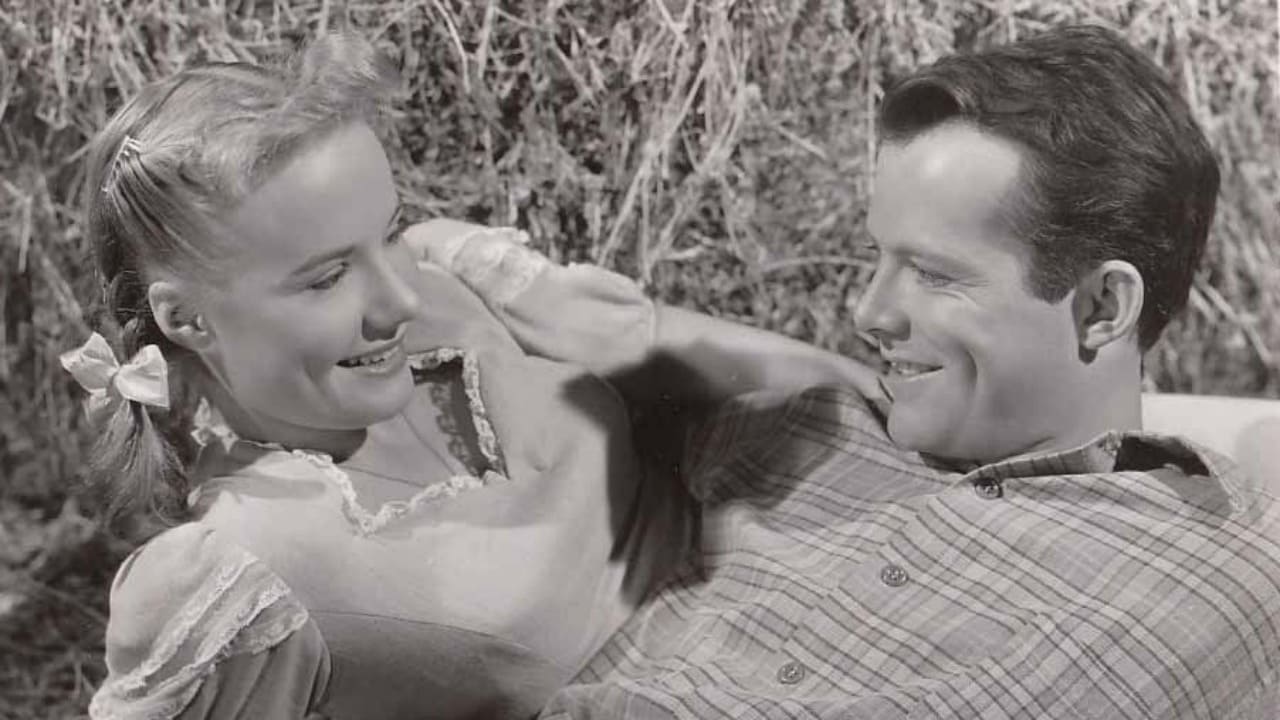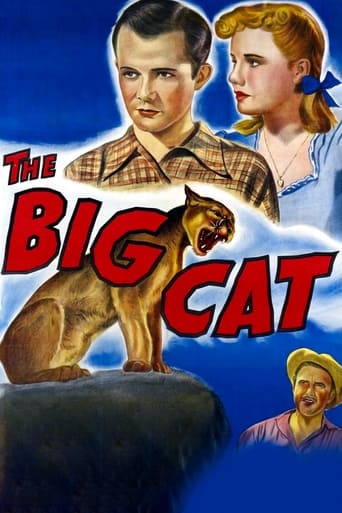

Wow! Such a good movie.
... View MoreVery well executed
... View MoreBest movie ever!
... View MoreI enjoyed watching this film and would recommend other to give it a try , (as I am) but this movie, although enjoyable to watch due to the better than average acting fails to add anything new to its storyline that is all too familiar to these types of movies.
... View MoreDirector: PHIL KARLSON. Screenplay: Morton Grant, Dorothy Yost. Story: Morton Grant. Photographed in Technicolor by W. Howard Greene. Technicolor color consultant: Natalie Kalmus. Film editor: Harvey Manger. Music composed by Paul Sawtell and directed by Irving Friedman. 2nd unit director: Noel Smith. Associate Technicolor color consultant: Francis C. Cugat. Special effects: Roy W. Seawright. Art director: Frank Durlauf. Set decorations: Ben W. Bone, Armor Marlowe. Production manager: James T. Vaughn. Assistant director: Ridgeway Callow. 2nd assistant director: William Nolte. Hair styles: Joan St Oegger, Gwen Van Upp. Make-up: Ern Westmore, Jack Pierce. Sound technician: Victor Appel. Producer: William Moss.William Moss Pictures, Inc. Copyright 19 May 1949 by Pathe Industries, Inc. Released in the U.S.A. through Eagle-Lion, in the U.K. through G.F.D. U.S. release: April 1949. U.K. release: 26 December 1949. Australian release by J. Arthur Rank through British Empire Films, Sydney release at the Capitol: 24 March 1951 (1 week only). Australian length: 7,009 feet (78 minutes). U.S. length: 76 minutes. U.K. length: 6,721 feet (74½ minutes).SYNOPSIS: 1932 — depression and drought in the Rocky Mountain country — and a killer cougar!COMMENT: Eagle-Lion films often enjoyed a perpetual half-life, hanging on through independent exchanges and the punishment of amateur projectionists, until the prints were so patched and shredded they literally fell apart. Very few of the movies in the independents' catalogs boasted any sort of color, let alone Technicolor, the acknowledged king of the rainbow, against which all other systems were regarded as second-rate; so The Big Cat was pretty near top of the popularity poll with schools, clubs and home cinemas that had no access to the output of Hollywood's major studios.Superbly photographed on natural locations in the Rocky Mountain country of Utah, capably directed and acted, "The Big Cat" has enough predictable action to satisfy the average fan. What it doesn't have is an original story. Once the characters are established — and they are a conventional enough lot — it is possible to stay three or four jumps ahead of the plot. But when you're looking at color for the first time on the kitchen wall or the roll-up screen, it's the color that counts — and Duke Greene, a veteran Technicolor cameraman knows his palettes — nothing else really matters.
... View MoreA young easterner returns to the drought affected valley where his mother grew up, aggravating the already intense feud between his mother's ex-fiancé and his estranged uncle. Complicating things even more is a huge mountain lion that holds the small community virtually hostage, killing precious livestock.Though not exactly politically correct, this is an outdoor adventure with a whole lot of heart. A simple folksy script, earnest performances, and excellent location photography make this almost impossible to resist.With all the limited resources of a low-budget film in nineteen-forty-nine, director Phil Karlson managed to pull off a minor miracle by getting believable performances out of the animals.
... View MoreYoung Lon McCallister has trouble making ends meet in depression-era Philadelphia, so he returns to his dead mother's rural hometown. There, he becomes involved with the town folk's soap opera past, and catches the eye of Peggy Ann Garner. Due to drought, a menacing cougar is on the scene, making the outdoors very dangerous for the movie's characters...There is a lot of fighting, with and without the cougar; but, that's not the film's most interesting feature. More interesting is that the movie features a few "child stars" past their "Hollywood Prime." On hand: Lon McCallister, from 1943's "Stage Door Canteen" and others, Peggy Ann Garner from 1945's "A Tree Grows in Brooklyn" and others, Skip Homeier from 1944's "Tomorrow, the World" and others, and Gene Reynolds from 1938's "Boys Town" and others. Mr. Reynolds won huge fame later, as a producer ("M*A*S*H")."The Big Cat" and the family dog win big acting honors. **** The Big Cat (4/49) Phil Karlson ~ Lon McCallister, Peggy Ann Garner, Preston Foster, Forrest Tucker
... View MoreOperating with a limited in number but generally talented group of eight actors, director Phil Karlson, soon to be known for his essays into noir, here creates an engrossing adventure film set in 1933 depression and drought wracked southern Utah, and incorporates many of the elements which later will prove vital to his deserved reputation as an important narrator of urban crime. Residents of a small secluded valley are being tormented by a large mountain lion which, due to a shortage of water, has invaded their region to prey upon livestock, and the bounty for the beast of $150 is coveted by two long-feuding neighbours, one of whom, Tom Eggers (Preston Foster) provides a place to live for a city-bred young man (Lon McCallister), the son of the former love of his host and also the nephew of Eggers' rival, Gil Hawks (Forrest Tucker). The well-crafted scenario includes elements of romance, suspense and humour to the basic plot, and a certain darkness of tone has raised the work above most others of its stamp, with crisp editing (Karlson and Harvey Manger) prevailing, and we enjoy particularly fine performances from Foster and McCallister, with a pleasingly large role for veteran character actor Irving Bacon, a standout as a farmer doubling as a preacher.
... View More